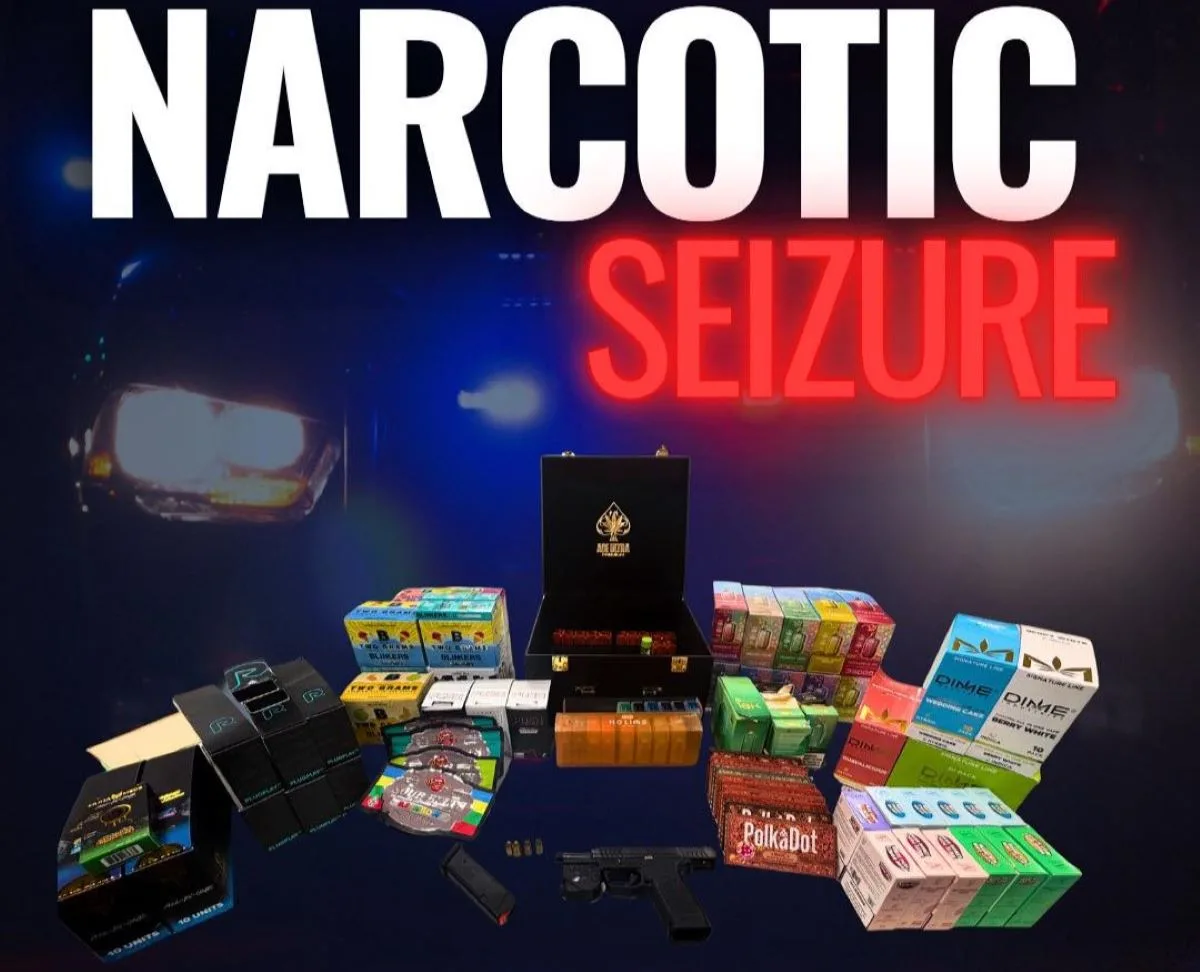Patrol officers stopped a vehicle for violations near Raitt St. and McFadden Ave. and detained the driver, according to the Santa Ana Police Department.
During their investigation, the officers recovered over 400 cannabis products, cash, and a ghost gun inside the vehicle.
Recent studies and reports indicate that a significant portion of marijuana purchased by California residents still comes from illegal, unlicensed sources despite legalization. Here’s the approximate range:
- Estimated Percentage: Around 55% to 65% of cannabis sales in California are from the illicit market.
- Reason: High taxes, regulatory costs, and limited retail availability make legal cannabis more expensive and less accessible, pushing consumers toward unlicensed sellers.
- Source: California Department of Cannabis Control and industry analyses have consistently reported that the illegal market remains dominant even years after legalization.
Here are the likely penalties the suspects could face under California law:
- Possession of Cannabis for Sale (Health & Safety Code §11359)
- Up to 6 months in county jail and/or a $500 fine for most first-time adult offenders.
- Can escalate to a felony with state prison time if:
- The suspect has prior serious or violent felony convictions.
- The offense involved selling to minors.
- The suspect employed someone under 21 in the illegal sale.
- Quantity Factor
- Over 400 cannabis products strongly suggests intent to sell, which prosecutors use to justify harsher penalties.
- Possession of a Ghost Gun (Penal Code §29180, AB 1621)
- Illegal to possess an unserialized firearm in California.
- Classified as a “wobbler” offense:
- Misdemeanor: Up to 1 year in county jail.
- Felony: Up to 3 years in state prison.
- Additional penalties may include firearm ownership bans and fines.
- Cash Seizure and Asset Forfeiture
- Large amounts of cash linked to drug sales can be seized under California’s asset forfeiture laws.
- Sentencing Enhancements
- If suspects have prior convictions or gang affiliations, penalties can increase significantly.
- Multiple charges (drug + firearm) can lead to stacked sentences
Here are the federal penalties the suspects could face:
Drug Offense: Possession with Intent to Distribute Marijuana (21 U.S.C. § 841)
- Marijuana is a Schedule I controlled substance under federal law.
- Penalties depend on quantity:
- Less than 50 kg: Up to 5 years in prison and $250,000 fine.
- 50–99 kg: Up to 20 years in prison and $1,000,000 fine.
- 1,000 kg or more (or 1,000+ plants): Mandatory minimum 10 years, up to life imprisonment, and fines up to $10,000,000.
- Even smaller amounts can trigger federal prosecution if linked to interstate commerce or organized distribution.
Firearm Offense: Ghost Gun (Unserialized Firearm)
- Under 18 U.S.C. § 922(g) and ATF rules, possessing an unserialized firearm can lead to:
- Felony charges with up to 10 years in federal prison.
- If combined with drug trafficking (18 U.S.C. § 924(c)):
- Mandatory minimum 5 years, consecutive to any drug sentence.
- Can increase to 7 years if brandished, 10 years if discharged.
- No parole; sentences stack.
Combined Drug + Firearm Charges
- Federal sentencing guidelines treat this as an aggravated offense:
- Base offense level for drug trafficking increases when a firearm is involved.
- Expect mandatory minimums and guideline enhancements.
- Typical combined sentences can range from 10–25 years or more, depending on quantity, prior record, and firearm use.
Additional Consequences
- Asset forfeiture: Cash and vehicle likely seized.
- Federal supervised release after prison term.
- Permanent firearm possession ban.
